[ad_1]
Citrusdal is a thriving farming district by trade but has been dragged kicking and screaming into tourism. It’s well worth the trip because it has so much to offer.
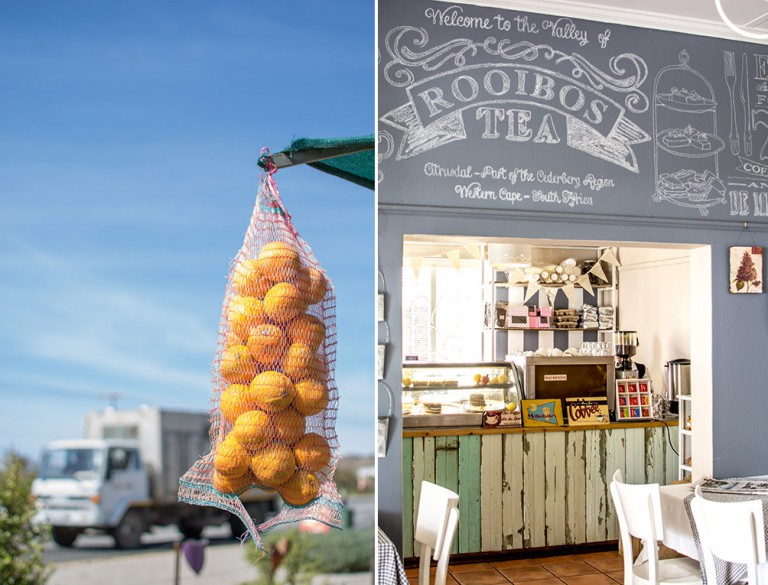
Locally grown oranges are for sale everywhere; the rustic interior of the Lovely Grapevine coffee shop.
I’ll be honest. Citrusdal is not quaint. On driving into town over the cerise bougainvillea-braided bridge I feared the worst. When I pull into a South African dorpie, it’s a habit to always drive along the main street, stop at the tourism office and spot the church steeple, and I was disappointed with all three. Citrusdal is not glamorous, but is plucky. Like the honey badger, its very presence has required dedication and diligence. Its beauty lies beyond a brusque book cover and to me character trumps looks, and courage makes for a far better story than beauty.
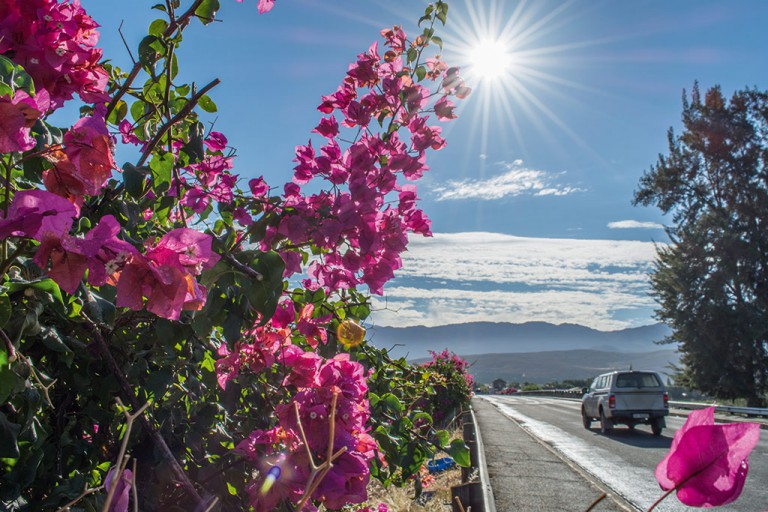
The bougainvillea-braided bridge makes for a beautiful entrance to the town.
More photos: a visit to Citrusdal
Citrusdal is roughly two hours from Cape Town. The N7 shoots up the West Coast, determined and fearless. It sprints north towards Namibia and when presented with mountains, simply snakes up the ascending Piekenierskloof Pass leaving the Swartland in smoke. There’s rhythm in the road and just as I get used to steering the silky uphill spiral, the snake dies and the tar dips again, dropping into the fertile Olifants River Valley.
Unlike the very first Europeans sent here on an inland explorative venture by Jan van Riebeeck, I had no 300-strong herd of the world’s largest land mammals complementing the panoramic view, but I had been sent on a similar assignment: suss things out.
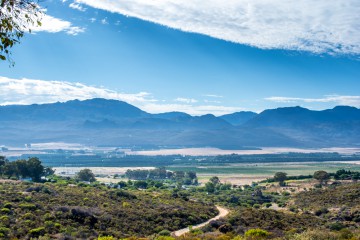
The view of Citrusdal as you descend the N7.
South Africa is the second largest exporter of citrus in the world after Spain and disease-free oranges from Citrusdal are exalted enough for export to the USA. The owner of Hebron guest house, Steve Oldroyd spells it out for me. ‘This is not McGregor. Citrusdal is run by wealthy citrus farmers who predominantly export their fruit. This town has been dragged kicking and screaming into the tourism industry.’ As a former chair of the Cederberg tourism region, I take his word for it.
Understanding Citrusdal means fathoming farming. The oldest orange tree in the area is over 250 years of age and the hardy rooibos plant naturally thrives in the extreme heat – which can reach severe 50-degree heights during the dry months – and drenching rains alongside the trendy wellness ingredient and gravelly-sounding buchu. The fynbos is easier to farm whereas the orchards require some ingenuity, and there’s a secret to the endurance of these fruit trees in an area plagued by soft, beach-like sand. Orange trees tend to have shallow roots so they’re planted over the deeper-reaching roots of lemon trees in order to suck up water and remain upright. Cattle have been here as long as the orange trees too. In the days long before telecommunications, cannons were used all along the West Coast to signal that ships were making their way to Cape Town. When a shot was heard nearby, Citrusdal fired off one of her own to alert the next village, then cattle were rounded up for a trip to the Cape harbour to sell fresh meat to hungry sailors arriving at the harbour at much the same time.
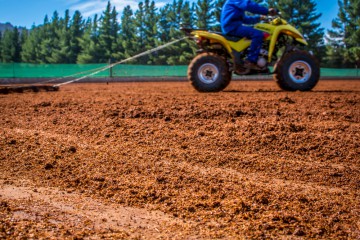
Here, a farmworker churns the rooibos that’s been laid out to ferment dragging a metal plate behind a quad bike.
A visit to the Old Village on the outskirts of Citrusdal gives an idea of this land before modern times. The old pass road (now closed) went through the town bringing business to the general trading store for decades, but today the smoother Piekenierskloof version passes high above it. A restaurant operates at the old pass offering the best view of the town. Citrusdal is known (or perhaps named itself after realising its tourism potential) as the ‘Gateway to the Cederberg’ and is flanked by the towering red mountain in the east. It also marks the start of the technicolour Namaqualand flower display come spring. When people started to visit, old farm-manager cottages were converted and rented out.
This rugged town is just a function of its gorgeous environment. Farmers gotta eat. And build. And sell produce. And buy beer. Its heart (farmers and Citrusdal alike) lies in its surroundings; the carmine mountains, canoe-worthy river, resilient, sweet-smelling orchards, twittering birdlife and seasonally transforming landscapes.
Plan your trip to Citrusdal
Getting to Citrusdal
From Cape Town, you have two options: drive straight up the N7 and after 170 km turn right onto the R303 leading straight into Citrusdal, or opt for the four-hour scenic route and drive up the coastal R27 into Langebaan and then Paternoster stopping for coffee. Carry onto Velddrif and Elands Bay, then turn inland taking the R366 for the last 96 kilometres to Citrusdal. Kardoesie Padstal on the way up the pass into town, sells an affordable variety of dried fruits, nuts, biltong and fresh lemonade. Be sure to pop in and stock up on snacks.
What to do in Citrusdal
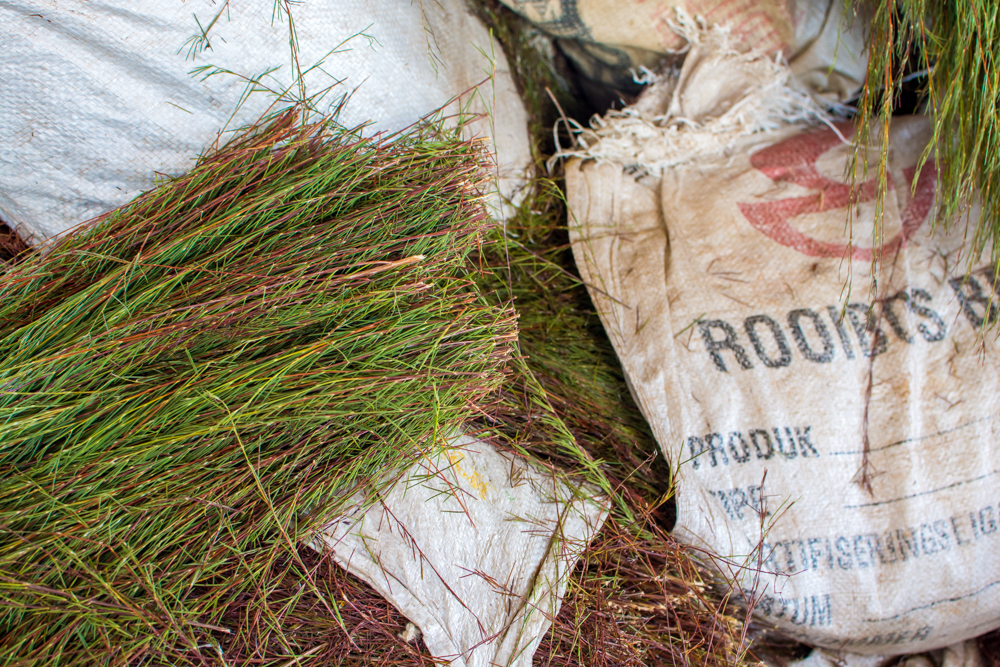
This is how the green rooibos plant looks, brought to the factory in bags from surrounding farms.
Take a rooibos tea tour on the Carmien Bergendal Rooibos Farm for a greater appreciation of the journey from green bush to steaming cup. It includes tastings of their tea range (Vintage Romance Flower Tea was my favourite) and information on how tea is graded so it can be traced back to the organic farm on which it grew. From R165 per person.

A tea and wine pairing at Hebron will give you a better idea of the aromas and tastes of local produce.
Pair teas with wine at Hebron. The newly opened tasting room matches locally produced wines like Sir Lambert to rooibos tea varieties and includes an aromatic menu of spices, fruits and fungi to help enhance flavours in food and drink.
Take the kids to The Baths, about 18 kilometres from Citrusdal, for a day in the glorious, heated mineral pools or natural rock pools which have been popular since 1739. There are also three hiking trails with excellent views. Be sure to book in advance, R100 for adults and R50 for children.
Sail down the mountain on the Piekenierskoof zipline and get the old ticker going. There are eight platforms and the zip lines range from 125 to 250 metres in length, with the highest point reaching 15 metres above the fynbos. The guides are confident and you can even spot baboons along the way. R250 per person is easily the best rate you can get for an activity like this. Book at the Piekenierskloof Mountain Resort.
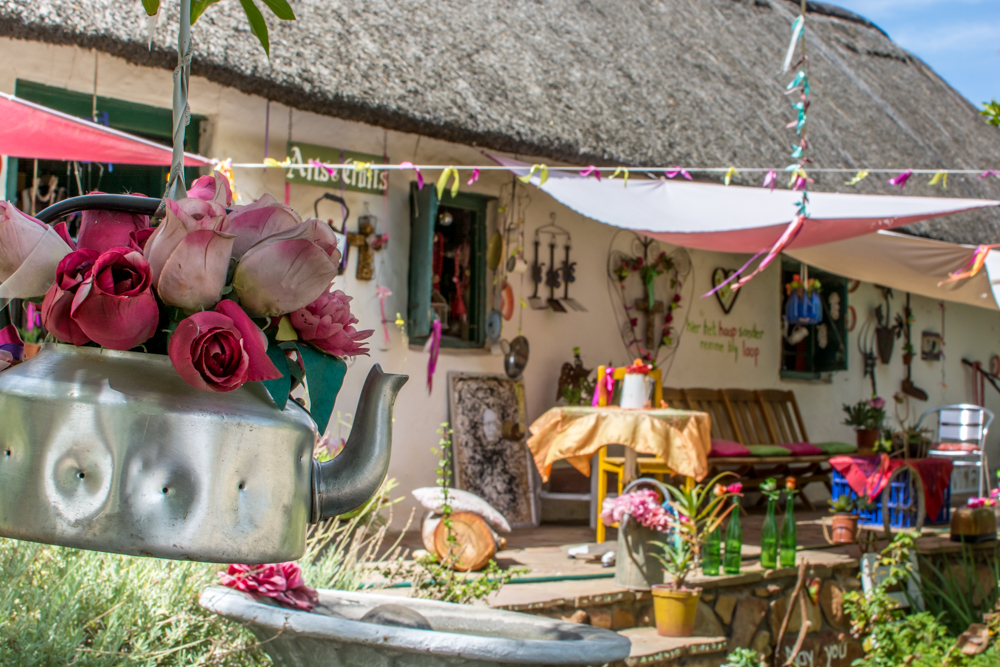
Die Sandveldhuisie is a quirky art house and great for a cup of coffee. Chat to the owners for everything Citrusdal.
Shop at the quirky Sandveldhuisie next to the old church and museum. A traditionally built thatched Sandveld cottage decorated in brightly coloured ribbons and fabrics with teapots, fabric flowers and whisks hanging from the trees outside, this quirky country shop and coffee stop is a wonderful way to support the community. Handmade jewellery and clothes are available to buy, and chickens roam the eccentric garden which sometimes accommodates a farmers’ market on Saturdays. Tel 0744155871.
Hike the Cederberg – take a drive to Algeria, roughly an hour from Citrusdal and pick a hiking route such as the beautiful Waterfall Walk, or explore the Stadsaal Caves where you’ll find evidence that elephants roamed the area. Visit the Citrusdal Tourist Bureau at 39 Voortrekker Street to get info on route lengths and how to get there.
Where to eat in Citrusdal
Hebron Restaurant based at the guest house of the same name offers scrumptious food in a homely setting. Open from Wednesday to Sunday for breakfast and lunch, Steve whips up fruit-laden pancakes and uses fresh ingredients from the garden along with homemade jams and sometimes bread. Dinners are by arrangement only, and worth every penny with a starter such as the pear, blue cheese and watercress salad followed by a Thai-style seared beef or slow-roasted pork belly with onion marmalade for R150. Tel 0229212595.
The Lovely Grapevine is a French-themed coffee shop described as more ‘Cape Town’ than other Citrusdal establishments. It offers fresh cakes and rooibos lattes, and for lunch, fancy sarmies such as toasted ciabatta with slices of beef fillet, brie and green fig drizzled in balsamic. There are gifts, cookies and trinkets for sale, and the shop caters for weddings. Phone first, to check it’s open. Tel 0229212190.
The Old Village on Modderfontein Farm originally housed Citrusdal’s first post office and trading store. Its restaurant and country pub, overlooking orchards in the Olifants River Valley, serves affordable lunch specials, such as BLT with chips, and on Sundays there’s a lunch buffet to tuck into before heading home to face the working week. Tel 0229213963.
Uitspan Coffee Shop, alongside the tourism office, is where the locals hang out. The stoep is full for breakfast and lunch, and like the town it isn’t chic, but this is where you’ll find character, simple, inexpensive fare on the menu and great milkshakes. At closing time the fully licensed bar opens (there’s no signage to indicate this) and a handful of locals gather for rugby and conversation. Tel 0229213273.
Where to stay in Citrusdal
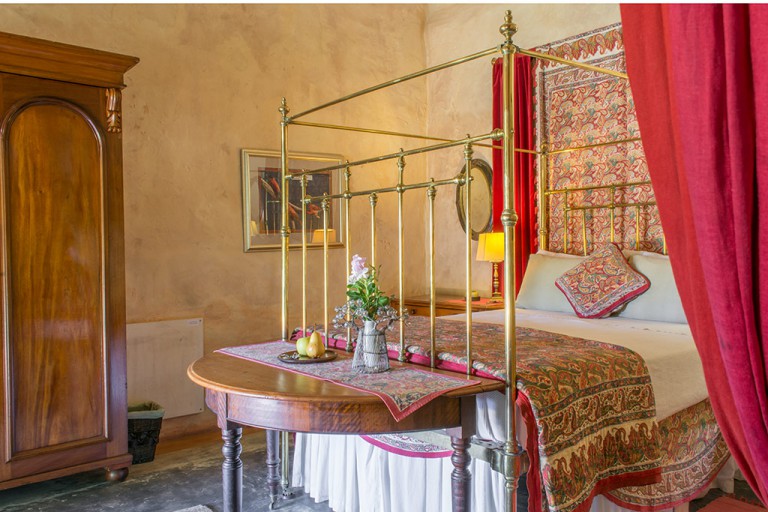
Rooms at Hebron, which also has a self-catering eco-cottage.
Hebron is a colourful guest house off the N7 about two kilometres before the turn-off to Citrusdal. Guest rooms overlook the Olifants River Valley and an infinity pool sits beside the lush vegetable garden. The Blomhuis (a self-catering eco-cottage) is available for families and has sunset views over a field of wax flowers. Breakfast on the old solar panel tables outside is delectable and despite being close to the highway, it’s surprisingly quiet. B&B from R375 per person sharing.
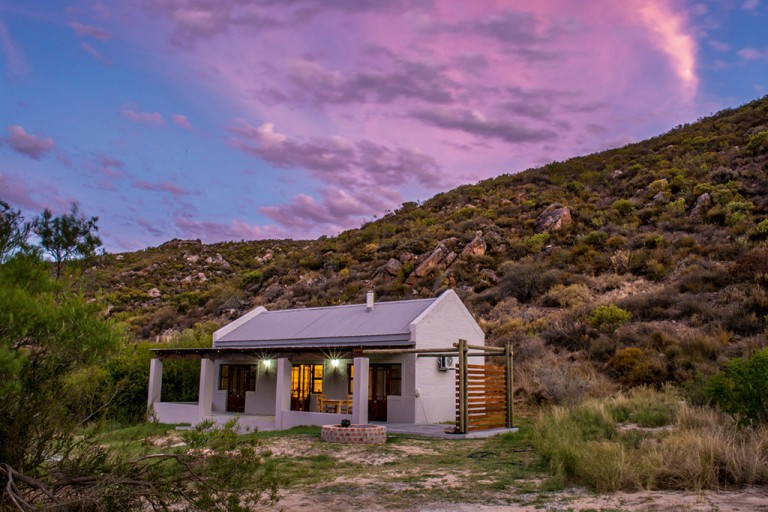
Clouds bounce colour off the sunset at the Elephant Leisure Resort’s unit four.
Cederkloof Botanical Retreat, where visitors will find a place where the fynbos grows on land rewilded, and guests can stay in comfort, participate in workshops and uncover the array of benefits from restoring a place to its natural habitat.
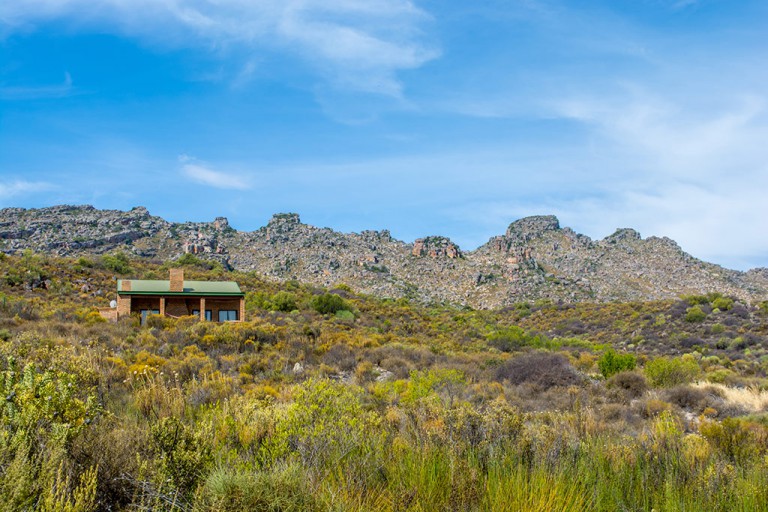
Wolfkop self-catering cottages, secluded in nature.
Wolfkop Self-Catering Cottages are for those who value the seclusion of nature. Choose from a one-, two- or three-bedroomed unit in Wolfkop Nature Reserve with a fireplace, stoep hammock to soak up the valley views and fresh orange juice provided in season. There is also a jungle gym for kids at some of the units. .
Otherwise, try glamping on the banks of the crystal-clear Olifants River at the Wolfkop Luxury Camping Village where the tents are already pitched. Percale linen, a cooler box and electric lighting are included – just bring clothes and food. From R850 for two.
This article first appeared in the June 2015 issue of Getaway magazine.
[ad_2]
Source link
Jarastyle – #Getaways #country #guide #Citrusdal
Courtesy : https://www.getaway.co.za/things-to-do/guide-what-to-do-citrusdal/

